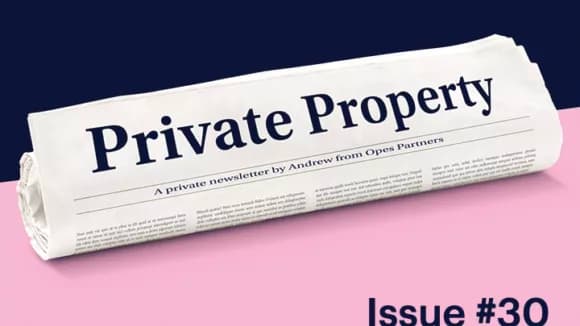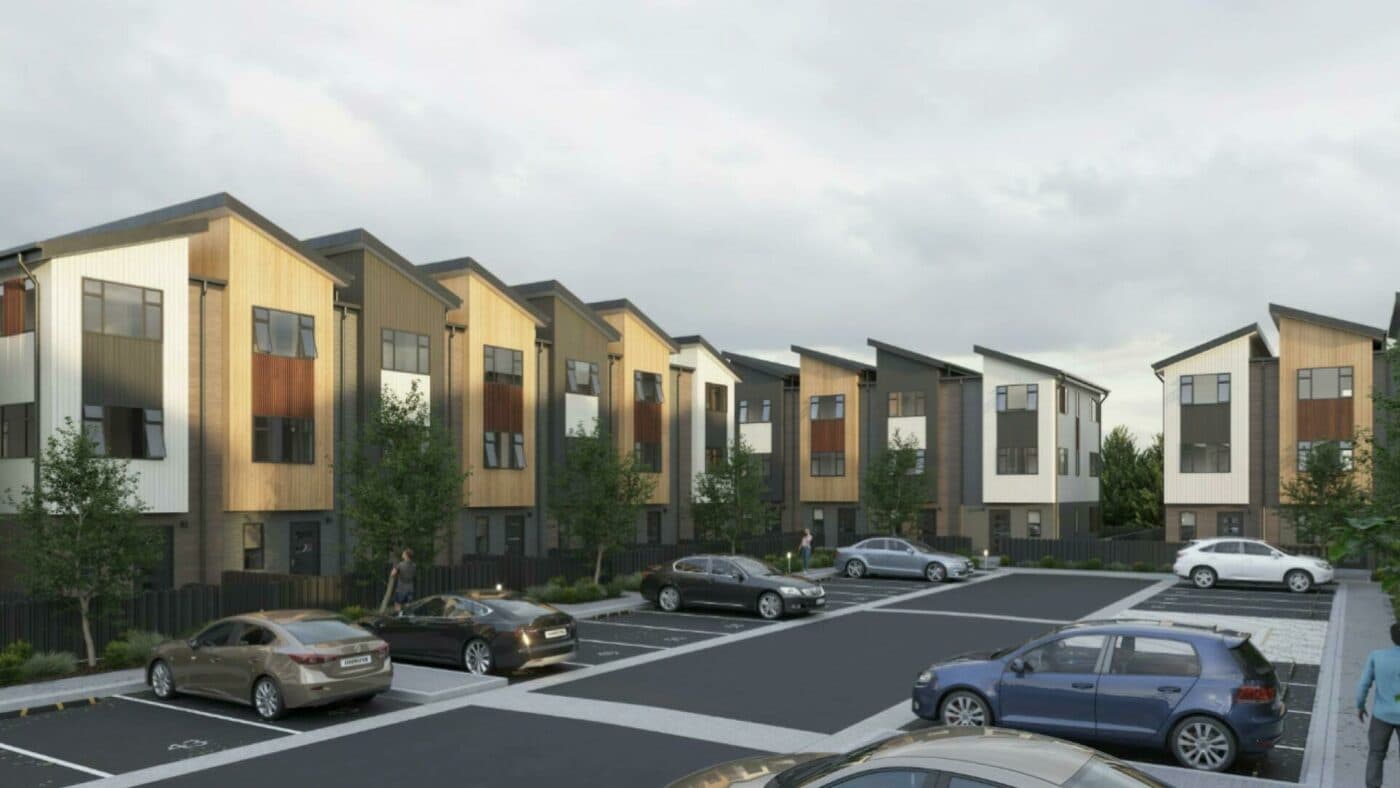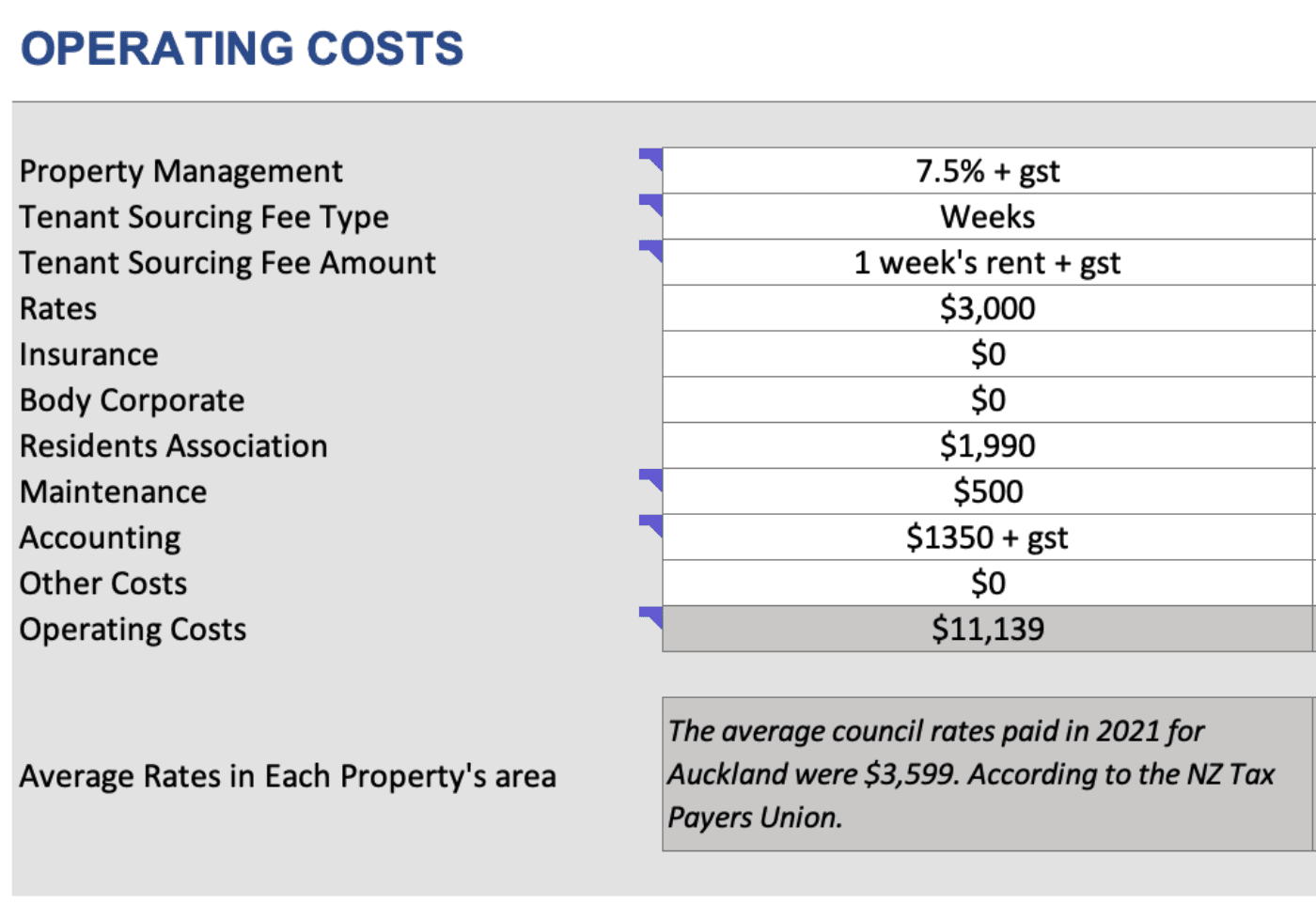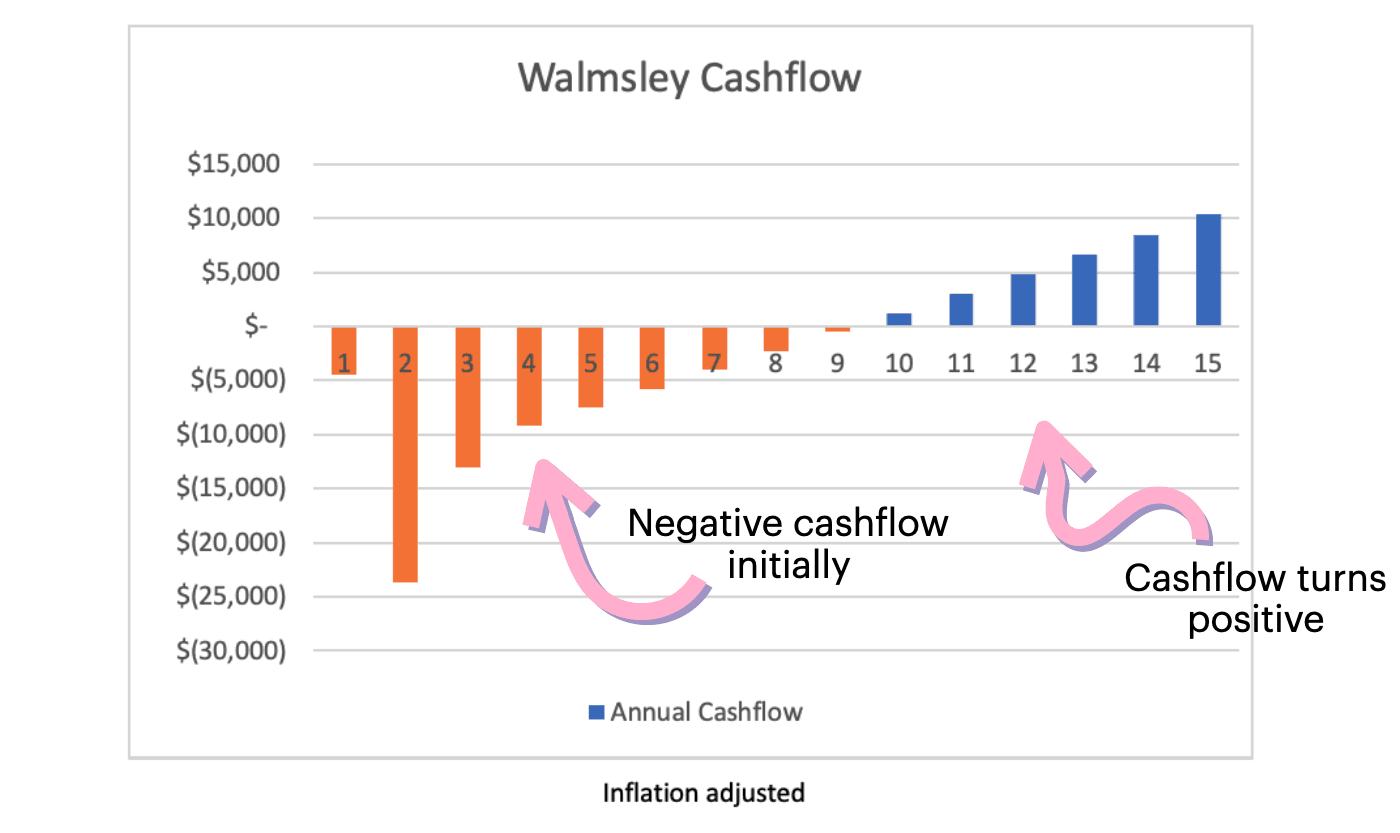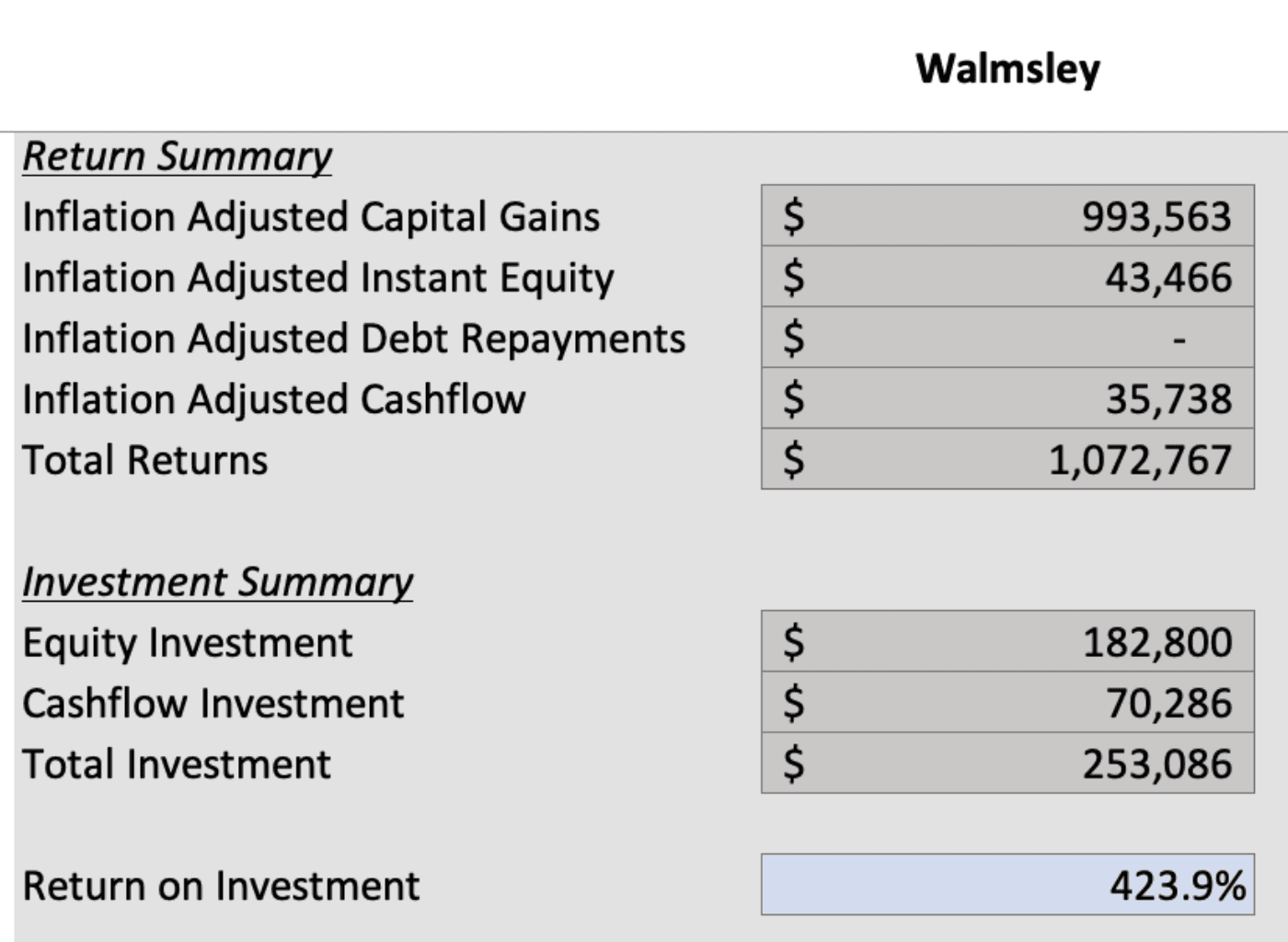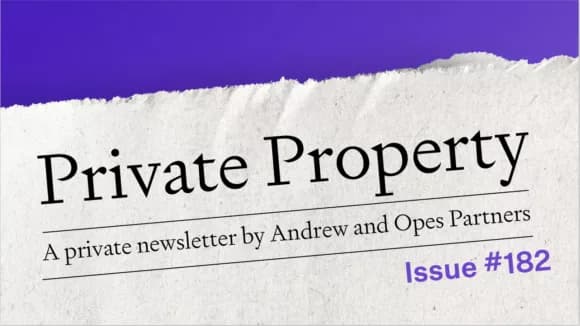See how terrible it is at the start when interest rates are high. The 11 investors buying this will have to top the property up.
This is very normal.
New build properties are often negatively geared initially, especially if you’re borrowing all the money to invest (no cash deposit).
It then gets better as rents rise and interest rates come back down.
There are strategies you can use to help ride the wave, e.g. using a revolving credit to fund part of the top-up. This is something to discuss with a property partner.
Step #6 – (bonus) – check the return on investment
Why would an investor buy a property with negative cashflow?
#1 – The higher interest rates create opportunities. These townhouses have a registered valuation of $945 – $970k. The purchase price is $899k.
The day the property settles, the investor will make $58,500 in equity. It’s worth it for them.
#2 – Click on the ‘Results’ page of the spreadsheet, and you get the whole picture of the investment:

